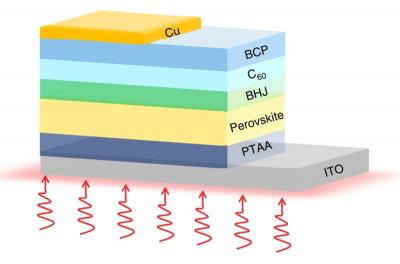Researchers at the Chinese Academy of Sciences (CAS) and other collaborators have reported a solution-processed broadband photodetector based on organic-inorganic hybrid perovskite and organic bulk heterojunction, achieving broadband response spectra up to 1000 nm with a high EQE in the NIR region, an ultrafast response speed of 5.6 ns and a wide linear dynamic range of 191 dB.

The team stated that thanks to the high-dynamic-range imaging capacity, high-quality visible-NIR actual imaging is obtained, enabling the accelerated translation of solution-processed photodetector applications from the laboratory to the imaging market.
Scientists from the State Key Laboratory of Integrated Optoelectronics, College of Electronic Science and Engineering, Jilin University, China, State Key Laboratory of Infrared Physics, Shanghai Institute of Technical Physics, Chinese Academy of Sciences and University of Chinese Academy of Sciences, China, and co-workers have designed new OIHP photodetectors combined with organic bulk heterojunction (BHJ) of suitable band structure, achieving a high external quantum efficiency (EQE) of higher than ~54% in the NIR region. Benefitting from low trap density in the light absorption layer and high carrier mobility in the transport layer, the OIHP/BHJ photodetectors have ultra-fast response times of just 5.6 nanoseconds by the transient photocurrent method (TPC) that can mitigate the issue of the resistance-capacitance time constant.
To further verify the broadband detection capability and large linear dynamic range (LDR), they adopted the OIHP/BHJ photodetectors to construct a single-pixel scanning optical imaging system. High-quality imaging of complex letter graphics and visible/NIR imaging of the heat coil are obtained through the imaging system based on the OIHP/BHJ photodetectors with large LDR, ultra-fast response speed, and room temperature stability. Hence, state-of-the-art OIHP photodetectors can accelerate the translation of solution-processed photodetector applications from the laboratory to the imaging market.

